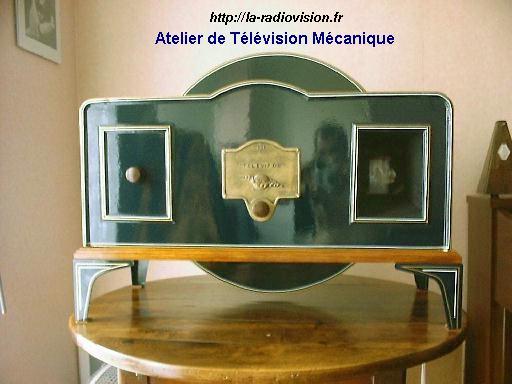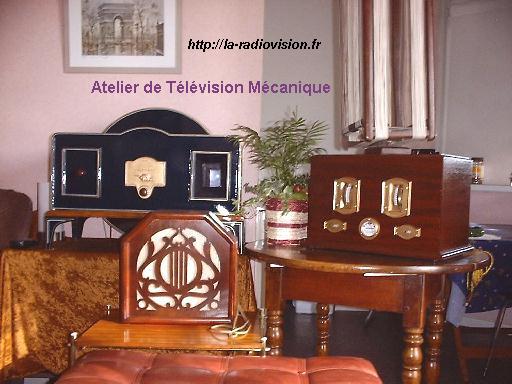 |
 |
Replica of the John L.BAIRD "TELEVISOR" (1930)
Made by Mrs. DUPOUY and NEIGE. Sold in 2010.

 |
 |

Machine characteristics:
This replica includes a 51 centimeters Nipkow scanning disk which gives 30 lines of analysis, sweeping from bottom to hight and right to left. The image size is approximately 5 cm high by 2cm width. When connected to the Aurora multi-standard converter, movies can be seen on it in good conditions.
Provided by Denis Asseman, the machine scanning disc is an exact replica of the one that Baird used on his TELEVISORs in 1930. So, it has the very same characteristics, size wise and shows square-shaped holes. - Frame speed = 12.5 /sec. Resolution = 2100 pixels. Scanning disk speed: 750 rpm. Dc motor speed controled by PLL electronics. This machine allows to see pictures with the original neon orange-like colour.
History:
Being one of the very first commercial televisor to be introduced in the english market in 1930, the Baird 'TELEVISOR' model may have been manufactured at around one thousand units by the Plessey company for the J.L. Baird Co.
Experimental broadcast 30 lines TV programs by the BBC have been seen on it till 1936. Although those early TV transmissions where dedicated to the english people, they also where often received in various part of France. Some archives reports receptions of Baird/BBC programs in the northern France, Paris and others, depending upon propagation conditions. Anyway, one could say that the BAIRD's TELEVISOR might have had a relatively modest success on the market, due to various factors. One of those, being the high price of the machine, which was also offered in kit packaging (without the housing), to lower the price.
Nowadays, only few units of the BAIRD TELEVISOR survived. Some units are exposed in various english (Bradford) and US (ETF) museums.
See the construction steps of the TELEVISOR's replica Housing.


